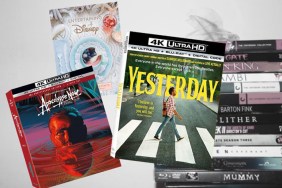It’s been said of master Japanese filmmaker Yasujiro Ozu (the guy who made Tokyo Story for aspiring film scholars) that he was, perhaps, too Japanese for his own good. His films, unlike the internationally accessible action romps of his contemporary Akira Kurosawa, were all steeped in the minutiae of Japanese culture, and bore a slow-moving static aesthetic that more resembled ancient Japanese poetry than any sort of western film.

But all that study would be just to bridge the cultural divide. Once you have a good head for Indian history and culture, you can be treated to some of the more thoughtful Indian films the world has seen. Pretty much the opposite of the overblown Bollywood traditions, Satyajit Ray comes from the Vittorio De Sica school of neo-realism, having exploded onto the international cineaste’s scene in 1955 with Pather Panchali, the first part of the so-called Apu Trilogy. He directed some 30 films in his career before his death in 1992.
The Criterion Collection has been, over the course of the last few years, releasing DVD box sets of lesser-known films by great filmmakers all under the aegis of The Eclipse Series. They are now up to volume 40, a three-film set of later works of Satyajit Ray, which includes 1984’s The Home and the World, 1989’s An Enemy of the People, and 1991’s The Stranger. I consider the Eclipse series a great way to deepen one’s film education, as these “lesser” films by great filmmakers can enrich and contextualize their careers better than merely consuming their “greats.” It also gave me a chance to catch up on Ray, as I had only previously see the Apu Trilogy. And that’s only because I am, personally, something of a sucker for old foreign classics. Here, then, is a review of the three films in Eclipse Series 40: Late Ray.
The Home and the World

The plot machinations unfold slowly and leisurely. Ray does not make films about direct climaxes or busy happenstance. He focuses on the pained, repressed hearts of his heroes. The Home and the World is not a good Ray film to start with, as its deliberate pace and slow revelations – not to mention its tragic ending – may alienate most viewers. Even if you know Ray, it will come across as far too mannered. But you’ll still sense that something relevant is happening on the screen. Something important is being said.

An Enemy of the People

This is one of the more complex films I have seen about politics and religion, and it doesn’t offer any easy answers. The final scenes to end on a note of hope, but it rings false after the poor scientist has been silenced and suffered so much at the hands of Hindu fundies and money-grubbing politicians. Ray, in interviews, admitted to seeing much inequality in India, and was outraged at the way extreme right-wing politics and extreme right-wing religion too often intertwined. It’s a moving film, but no matter where you stand on the religious or political spectrum, it will rile you.

The Stranger

The Stranger is a beatific experience, but is not without its confrontation. The characters do feel more like philosophical avatars than they do actual characters, and that can turn some audience members off, but it’s hard to argue with Sudhindra’s worldview. Look past your pinched, panicked city life, and welcome change.

The films of Ray may feel like homework a lot of the time (The Home and the World especially), but when it comes to great works of literature, great movies, and difficult challenges, I offer the following philosophy: Why the Hell not?
Witney Seibold is a featured contributor on the CraveOnline Film Channel, and co-host of The B-Movies Podcast. You can read his weekly articles Trolling, Free Film School and The Series Project, and follow him on “Twitter” at @WitneySeibold, where he is slowly losing his mind.








